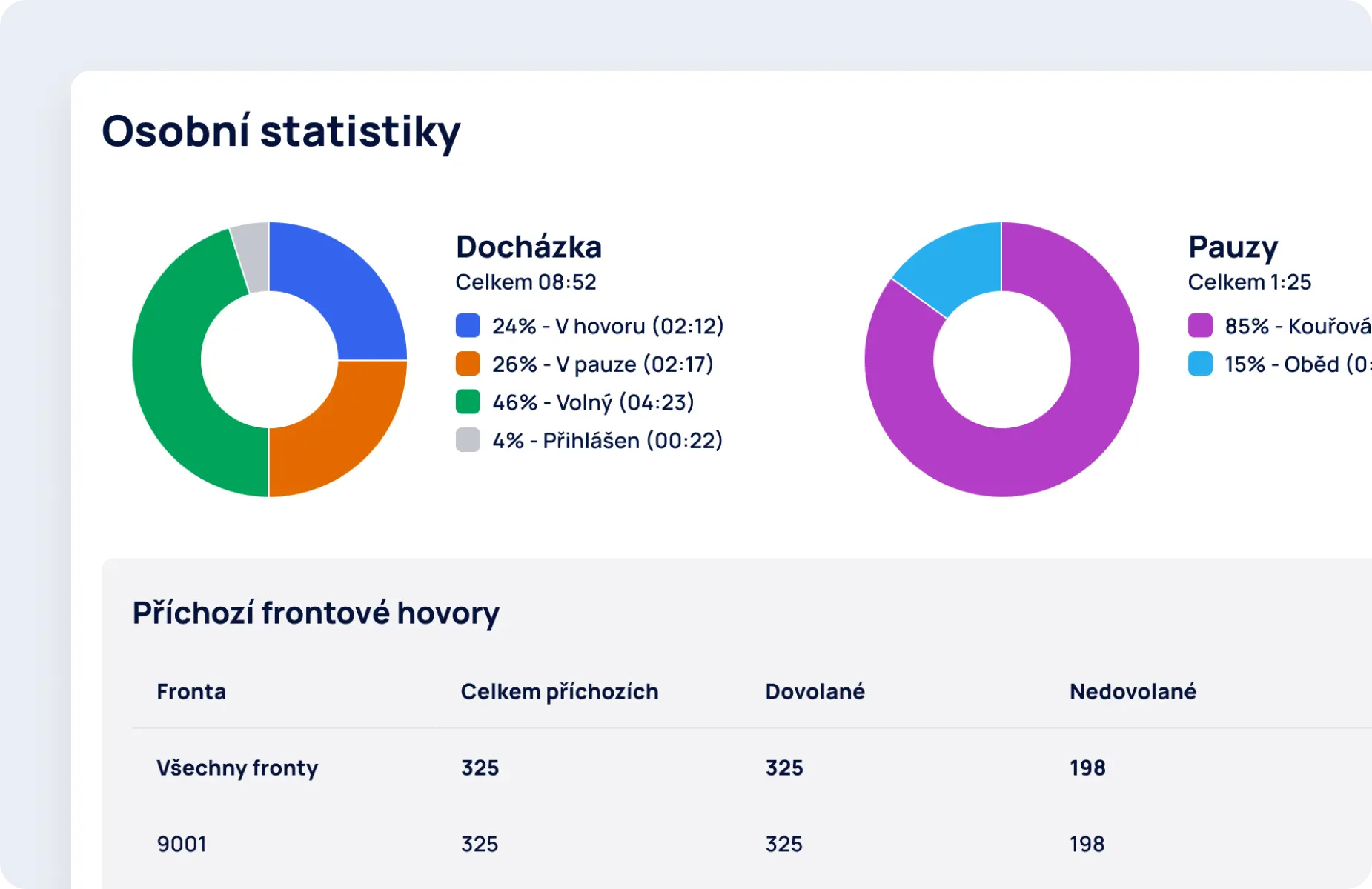BC4 Call Center
Smart telephony and contact centre for businesses of all sizes

Our Role
- Product Management
- Product Design
- Software architecture
- Frontend development
- Backend development
- Mobile development
- User testing
- Quality assurance
- Design Systems
In a nutshell
In 2021, on the basis of long-term cooperation, BusinessCom asked us if we would like to cooperate on the development of a new version of the system, which was already technologically outdated and required a complete rewrite using modern components. After 4 months of developing a functional prototype, we agreed on full cooperation and since then we have been developing and expanding the system with new and modern features.




Agent Panel
Module for handling incoming and outgoing calls within the Contact Centre.

Queue panel
The queue panel allows you to quickly log in and out of queues and work with pauses.

Call Detail
Allows you to write a note about the call, or select call categories, and displays the caller's call history.

Quick contacts
This section allows individual panel settings for quick dialling of the most frequent numbers, or quick transfer of calls to the most common contacts.

Callback
Displays missed calls and requested callbacks, allowing you to dial them directly and mark them as answered.

Statistics
They display the agent's daily report and allow him to directly control his performance.

Supervisor panel
The supervisor panel is designed for Contact Center managers to monitor the current situation and performance of individual agents and queues.

CDR
In the CDR module, users can access a list of all calls on the PBX according to their rights.

Reporing
Common Contact Center performance statistics are available in the Reports module.

Wallboard
The Wallboard is designed to be displayed on a wall-mounted TV screen and shows the current status of the Contact Centre's workload.

Mobile app
For easy operation outside the office, we have developed native apps for Android and iOS.

Administration
The administration allows for advanced detailed settings of individual parts of the system, thus adapting it to the individual requirements of each organization.
